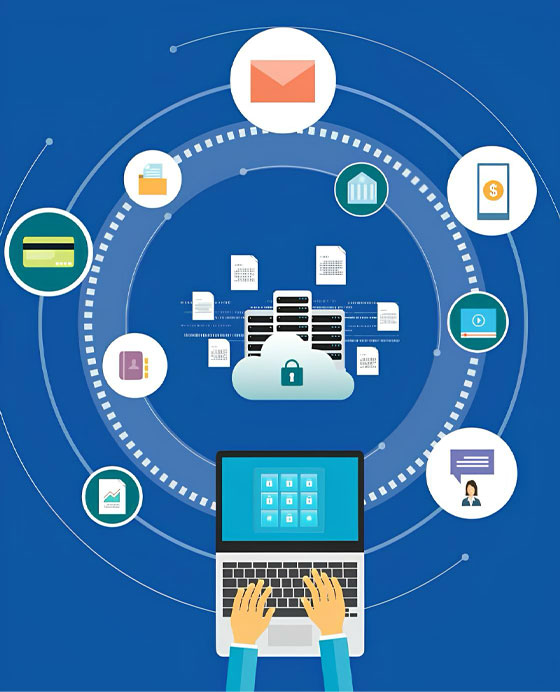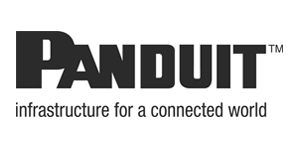IT and Network
Information technology is the development, maintenance, or use of systems — especially computer systems, software and networks — for storing, retrieving and sending information. Computer networking is the process of electronically linking two or more computing devices to exchange information through data connections.
It and Network Two basic network types are local-area networks (LANs) and wide-area networks (WANs). LANs connect computers and peripheral devices in a limited physical area, such as a business office, laboratory, or college campus, by means of links (wires, Ethernet cables, fibre optics, Wi-Fi) that transmit data rapidly.


How does a computer network work?
Specialized devices such as switches, routers, and access points form the foundation of computer networks.
Switches connect and help to internally secure computers, printers, servers, and other devices to networks in homes or organizations. Access points are switches that connect devices to networks without the use of cables.
Routers connect networks to other networks and act as dispatchers. They analyze data to be sent across a network, choose the best routes for it, and send it on its way. Routers connect your home and business to the world and help protect information from outside security threats.
While switches and routers differ in several ways, one key difference is how they identify end devices. A Layer 2 switch uniquely identifies a device by its “burned-in” MAC address. A Layer 3 router uniquely identifies a device’s network connection with a network-assigned IP address.
Today, most switches include some level of routing functionality.
MAC and IP address uniquely define devices and network connections, respectively, in a network. A MAC address is a number assigned to a network interface card (NIC) by a device’s manufacturer. An IP address is a number assigned to a network connection.
How is computer networking evolving?
Modern-day networks deliver more than connectivity. Organizations are embarking on transforming themselves digitally. Their networks are critical to this transformation and to their success. The types of network architectures that are evolving to meet these needs are as follows:
Software-defined (SDN): In response to new requirements in the “digital” age, network architecture is becoming more programmable, automated, and open. In software-defined networks, the routing of traffic is controlled centrally through software-based mechanisms. This helps the network to react quickly to changing conditions.
Intent-based: Building on SDN principles, intent-based networking (IBN) not only introduces agility but also sets up a network to achieve desired objectives by automating operations extensively, analyzing its performance, pinpointing problematic areas, providing all-around security, and integrating with business processes.
Virtualized: The underlying physical network infrastructure can be partitioned logically, to create multiple “overlay” networks. Each of these logical networks can be tuned to meet specific security, quality-of-service (QoS), and other requirements.
Controller-based: Network controllers are crucial to scaling and securing networks. Controllers automate networking functions by translating business intent to device configurations, and they monitor devices continuously to help ensure performance and security. Controllers simplify operations and help organizations respond to changing business requirements.
Multidomain integrations: Larger enterprises may construct separate networks, also called networking domains, for their offices, WANs, and data centers. These networks communicate with one another through their controllers. Such cross-network, or multidomain, integrations generally involve exchanging relevant operating parameters to help ensure that desired business outcomes that span network domains are achieved.
- Software-defined (SDN): In response to new requirements in the “digital” age, network architecture is becoming more programmable, automated, and open. In software-defined networks, the routing of traffic is controlled centrally through software-based mechanisms. This helps the network to react quickly to changing conditions.
- Intent-based: Building on SDN principles, intent-based networking (IBN) not only introduces agility but also sets up a network to achieve desired objectives by automating operations extensively, analyzing its performance, pinpointing problematic areas, providing all-around security, and integrating with business processes.
- Virtualized: The underlying physical network infrastructure can be partitioned logically, to create multiple “overlay” networks. Each of these logical networks can be tuned to meet specific security, quality-of-service (QoS), and other requirements.
- Controller-based: Network controllers are crucial to scaling and securing networks. Controllers automate networking functions by translating business intent to device configurations, and they monitor devices continuously to help ensure performance and security. Controllers simplify operations and help organizations respond to changing business requirements.
- Multidomain integrations: Larger enterprises may construct separate networks, also called networking domains, for their offices, WANs, and data centers. These networks communicate with one another through their controllers. Such cross-network, or multidomain, integrations generally involve exchanging relevant operating parameters to help ensure that desired business outcomes that span network domains are achieved.
Brand We offer






Mauris eu nisi eget nisi imperdiet vestibulum. Nunc sodales vehicula risus. Suspendisse id mauris sodales, blandit tortor eu, sodales justo. Morbi tincidunt, ante vel suscipit volutpat, turpis enim volutpSectetur adipiscing elit, sed do eiusm onsectetur adipiscing elit, sed do eiusm od tempor incididunt ut labore. Ut vel placerat eros, eu tincidunt velit. Consectetur adipiscing elit, adipiscing elit, sed do.
Sed ut perspiciatis unde omnis iste natus et
Lorem ipsum dolor sit amet, consetetur sadipscing elitr, sed diam nonumy eirmod tempor invidunt ut labore et dolore magna aliquyam erat, sed diam voluptua. At vero eos et accusam et justo duo dolores et ea rebum. Stet clita kasd gubergren, no sea takimata sanctus est Lorem ipsum dolor sit amet.
Aliquam laoreet sed neque ac vehicula. Cras congue eros nec quam laoreet, in viverra erat bibendum. Cras turpis urna, vulputate at est vitae, posuere lobortis erat.


Lorem ipsum dolor sit amet, consetetur sadipscing elitr, sed diam nonumy eirmod tempor invidunt ut labore et dolore magna aliquyam erat, sed diam voluptua. At vero eos et accusam et justo duo dolores et ea rebum. Stet clita kasd gubergren, no sea takimata sanctus est Lorem ipsum dolor sit amet.
Aliquam quis lobortis quam
Curabitur pellentesque odio magna, id malesuada arcu sodales ut. Sed sed quam ut ex bibendum commodo id id magna. Aliquam sed ligula sed ante blandit volutpat. Ut bibendum, nisi et mattis vulputate, odio arcu aliquet metus, nec dapibus risus risus quis lectus.
Lorem ipsum dolor sit amet, consetetur sadipscing elitr, sed diam nonumy eirmod tempor invidunt ut labore et dolore magna aliquyam erat, sed diam voluptua. At vero eos et accusam et justo duo dolores et ea rebum. Stet clita kasd gubergren, no sea takimata sanctus est Lorem ipsum dolor sit amet.
At vero eos et accusam et justo duo dolores et ea rebum. Stet clita kasd gubergren, no sea takimata sanctus est Lorem ipsum dolor sit amet. Lorem ipsum dolor sit amet, consetetur sadipscing elitr, sed diam nonumy eirmod tempor invidunt ut labore et dolore magna aliquyam erat, sed diam voluptua. At vero eos et accusam et justo duo dolores et ea rebum. Stet clita kasd gubergren, no sea takimata sanctus est Lorem ipsum dolor sit amet. Lorem ipsum dolor sit amet, consetetur sadipscing elitr.

